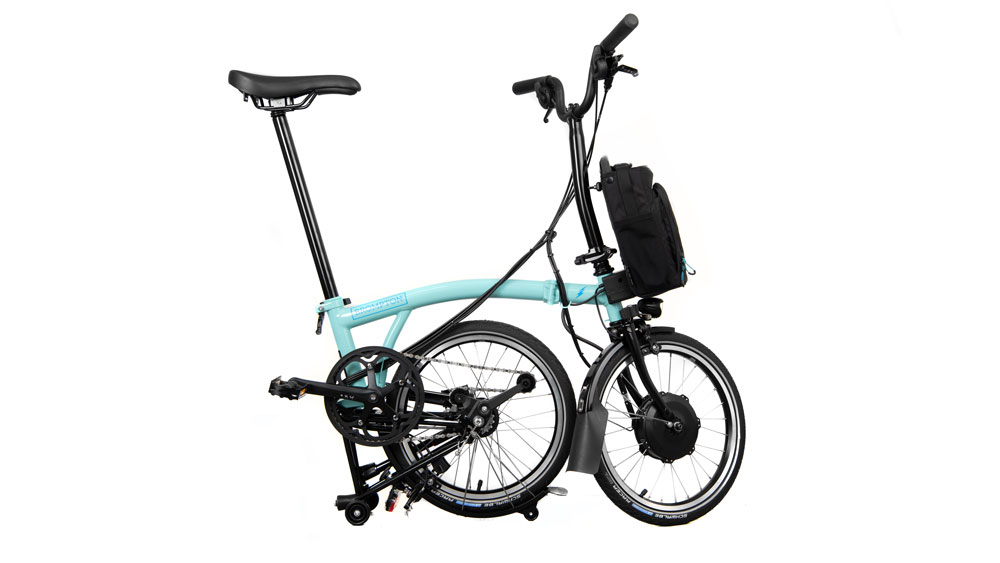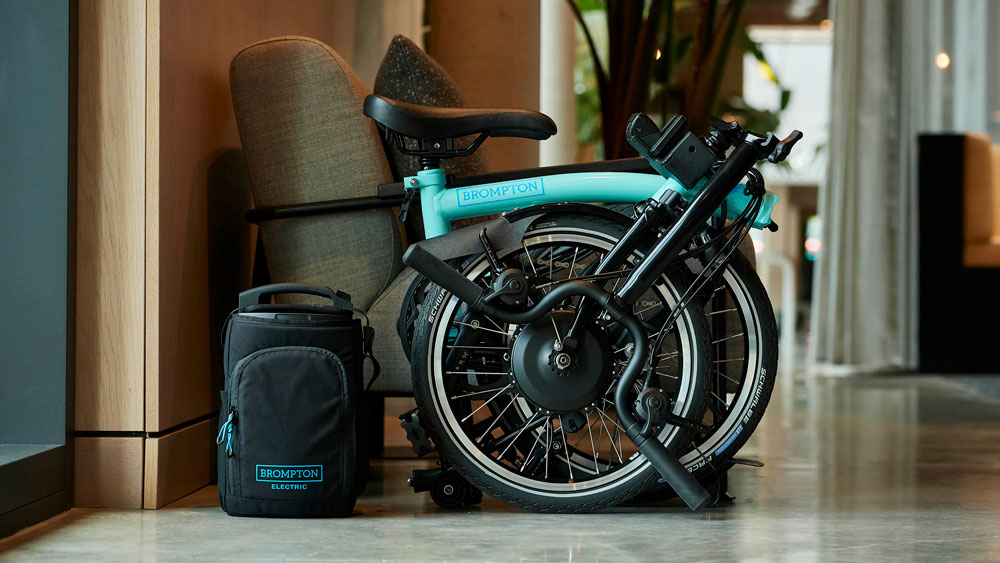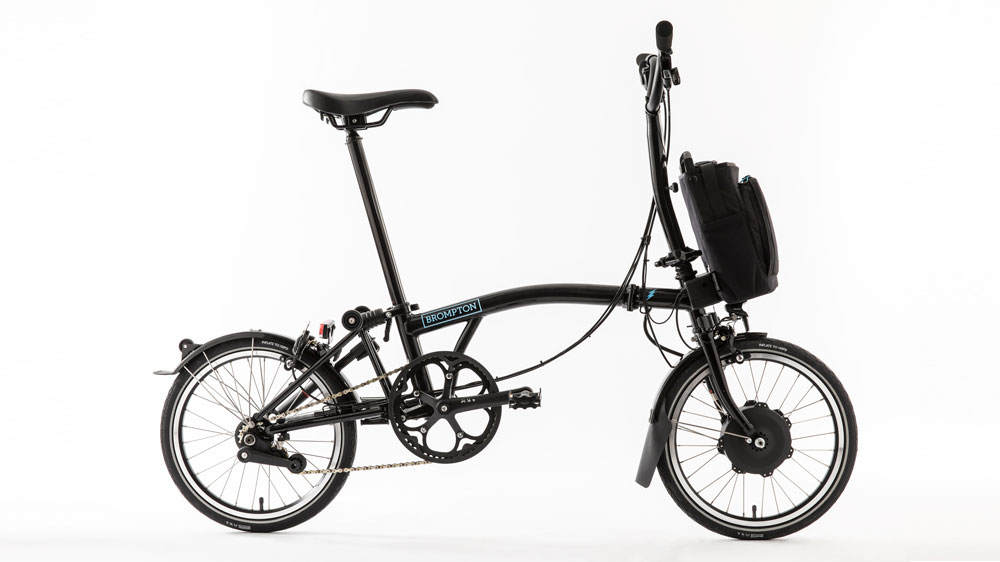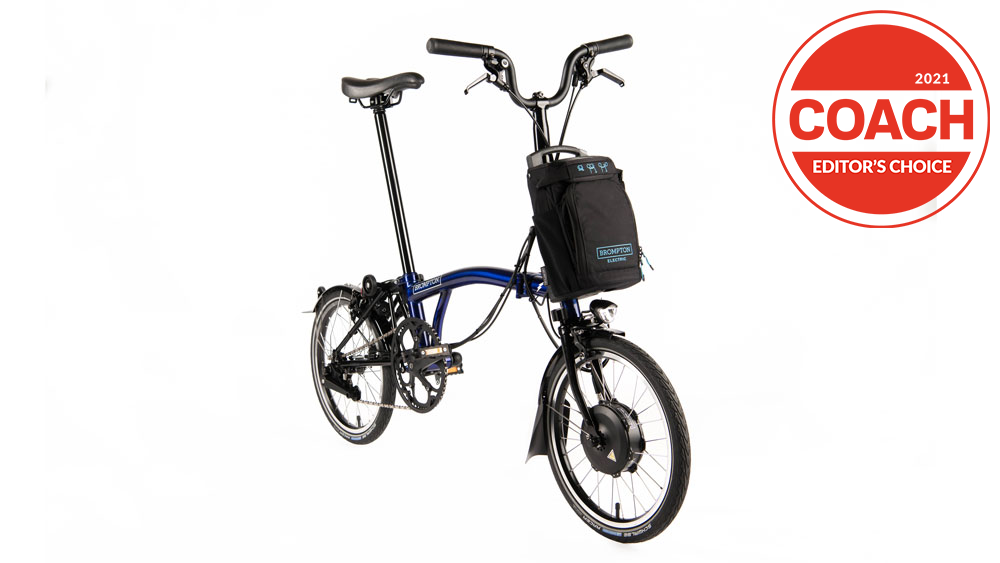You can trust Coach
The runaround class of car has met its match. With driving in cities becoming a huge hassle, using a bike to get around is increasingly attractive, and the Brompton Electric is definitively the best for serving this need. At £3,000 it’s admittedly expensive, but I’m convinced it’s worth it.
Imagine you have to visit the post office, then your GP’s surgery 2.24km away, then your bank branch 1.71km away from your GP, then the 1.55km home up a bit of a hill. And it needs to be done in your lunch hour.
I did exactly that using a Brompton Electric and it was a breeze. I cruised along at the pace of south London traffic, often passing cars stuck in a snarl-up; skipped the bother of parking by folding up the bike and carrying it in (it’s 18.4kg with the battery); and glided home up the hill by relying on the motor. It beats a car on all counts. It’s superior to a folding traditional bike because the electric assistance means you’ll never feel too tired to use it, or arrive sweaty from exerting yourself. It bests a non-folding bike because you don’t need to find a place to lock it up and at home it will find a nook or cupboard to live in. Again and again I pulled out the fold-up e-bike neatly stored in my cupboard under the stairs over the hassle of unlocking my regular bike.
The Brompton Electric is also head and shoulders above the other folding e-bikes I’ve tried. Like most other folding bikes – electric or otherwise – there are hinges on the head tube and down tube, but Brompton tucks the rear wheel under the body.
- NEWSFLASH: New Brompton Electric P Line Revealed

This unique design makes for an exceptionally small folded footprint of 565mm high x 585mm wide x 270mm long. Or in practical terms, it neatly slots into my cupboard under the stairs. With other models I’ve had to clear the cupboard out entirely and wedge the bike in diagonally. I’m confident that no matter how small your home is, you’ll find somewhere for a Brompton Electric to live.

The battery is another example of exemplary design. It comes in a carry case and clicks on and off in front of the handlebars. The case has a fold-away carry strap so you can sling it on one shoulder and pick up the bike on the other side if you’re taking it onto a train. A detachable battery is of course much more convenient to charge as well.
That battery can also slot into a 20-litre City Bag (£135), sold by Brompton as an extra, leaving plenty of space for work or errand stuff. As someone who normally uses a backpack instead of panniers, carrying my football kit on the front of the bike was really rather lovely. The City Bag is expensive, but if you can use a Cycle To Work scheme to reduce the cost of a Brompton Electric, accessories like the bag will be discounted too and I’d strongly recommend one.

The battery is proprietary and with a range of 30-70km, it matches up to the competition just fine: the Gocycle GX goes up to 65km, as does the Volt Metro LS, while the Raleigh Stow-E-Way quotes 50km. But really, as long as you don’t think you’ll cover more than 30km on your daily travels, you can whack it on the highest level of assistance and charge it every night if you like – it charges quickly enough in four hours, although a fast charger (£95) is also available which cuts the charging time in half.
As you’d expect from a company that excels in design, there are integrated bike lights which run off the battery, and these also automatically come on when you slot the battery on to the bike if it’s dark.
All great stuff, but there’s a level of detail to the design that only reveals itself after extended use. For instance, after leaving the Brompton Electric languishing in a locked-down office, I returned to give it the once-over and ride it home. The tyres needed pumping up, but the only pumps I could find while raiding Cyclist magazine’s tool cupboard were Presta rather than Schrader valves. Just as I was about to give up I spotted a bike pump on the bike. It hadn’t been pointed out to me when the review model was handed over, and it was so well integrated it was virtually invisible.

The Brompton Electric is also surprisingly pleasant to ride. I’m 1.8m (6ft) tall and feel a bit out of proportion on some folding e-bikes, but I wasn’t uncomfortable at all. I used a model with the H handlebars, which raise the grips compared with M, and I rode the 12km between my home and the office in complete comfort (although I’m not sure how much farther I’d want to go).
With a small 16in (349mm) wheel size, it’s worth keeping a close eye out for particularly deep potholes, but the punchy motor meant I had no trouble keeping up with traffic flows and I often found myself overtaking cyclists on non-electric bikes on the flat. Steep hills posed no problems for the motor either.
The smoothness of the assistance is welcome and a little surprising, especially as the motor is on the front wheel – conventional wisdom maintains that mounting the motor between the pedals results in a more balanced ride. At the highest level of assistance (why ride in any other mode?) you get quite a push, more so than the gradual introduction of power on other high-end hybrid e-bikes I’ve tried, but Brompton has managed the trick of not making it feel jerky. It was continually delightful to get a kick of speed with little effort.
It does require a little effort to get going again, with assistance taking a moment to kick in, so it’s useful to come to a stop in a lower gear if you’re riding the six-gear version as I was. The entry-level model comes with two gears, which I suspect will be more than enough unless you live in an especially hilly area – I rarely used the lighter gears.
See related
If you’re thinking of using a Brompton Electric as part of a multi-stage commute I’d recommend it, although only if you can wheel it along stations and platforms and carry it up stairs in its folded-out state, allowing you to pick it up using the crossbar. The folded-up Brompton is fine to lift onto a train or carry a few metres, but beyond that it becomes awkward to carry in one hand by your side, so it’s not ideal for, say, the London Underground.
The Brompton Electric is by no means cheap at £2,875 for the two-gear version and £3,020 for the six-gear. However, if you can buy it through a Cycle To Work scheme, lower-rate taxpayers can reduce that by more than £700, while a higher-rate taxpayer can get £1,000 off. As I think of a Brompton Electric as a mode of transport rather than as equipment for a leisure activity, it’s also worth considering the fuel costs or public transport fares you’d avoid by using a Brompton. If you’re thinking of replacing car trips with it, I’d also take into account the time you’ll save from avoiding traffic and finding somewhere to park.
Beyond these considerations, the freedom it affords to move around a city with minimum hassle makes it well worth the investment.
Buy from Brompton | From £2,875 for two-speed, from £3,020 for six-speed

Jonathan Shannon was the editor of the Coach website from 2016 to 2024, developing a wide-ranging experience of health and fitness. Jonathan took up running while editing Coach and used the training plans on the site to run a sub-40min 10K, 1hr 28min half marathon and 3hr 6min marathon. He’s an advocate of cycling to work and is Coach’s e-bike reviewer, and not just because he lives up a bit of a hill. He also reviews fitness trackers and other workout gear.

